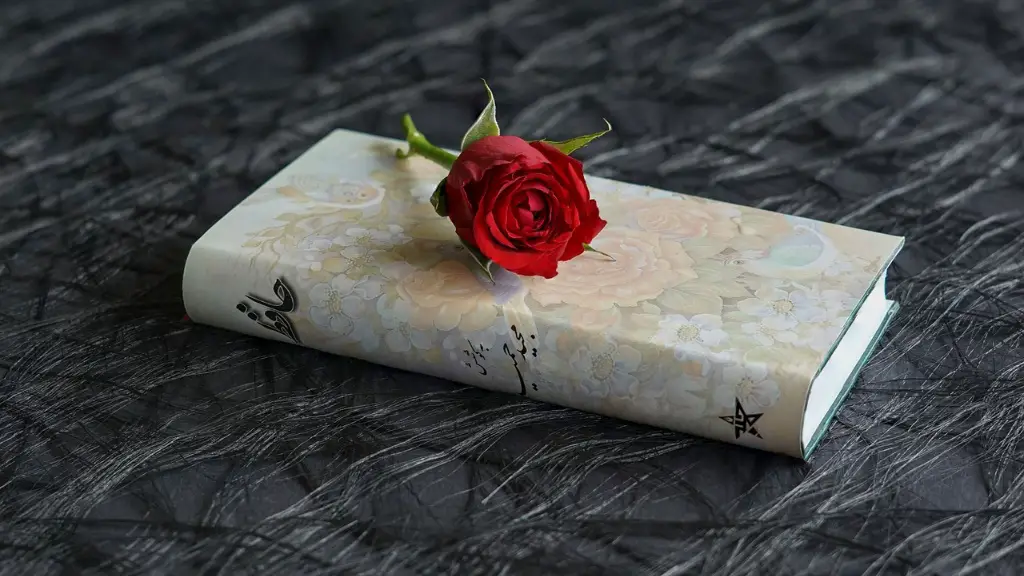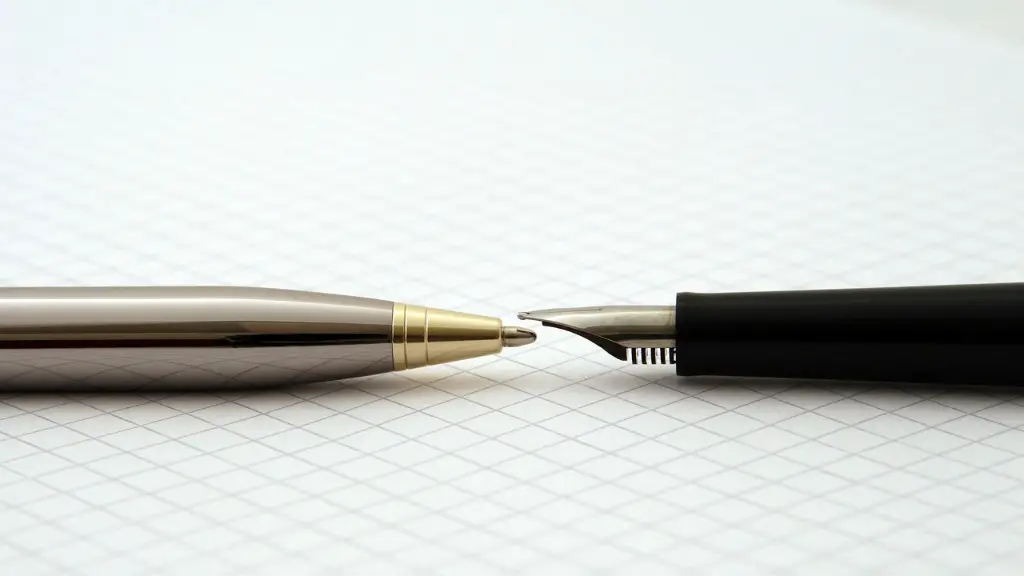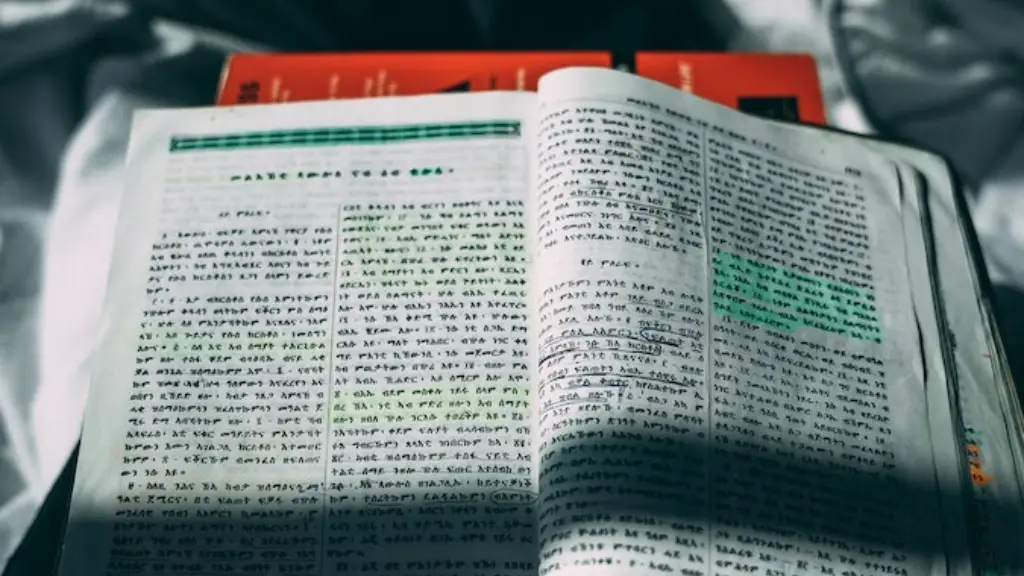Poetry is a type of literary art form or creative writing. It is composed of words, sounds, rhythms and imagery that convey strong feelings with deliberate choice and use of specific language. It is a broad genre as it can be written in different forms, styles, structures and tones. Poetry is distinct from other forms of writing because of its unique form, content and language.
Elements of poetry include literary devices such as metaphors, similes, imagery and sound devices as well as various genre conventions. Metaphors and similes are used to compare and contrast two different images to create a mental picture or to enliven an idea. Metonymy, a figure of speech, is also often used in poetry, as it allows an insight into hidden meanings and emotions. Imagery, through the description and visualization of images, is essential in conveying a poem’s message. Poetic devices can include the use of repetition, assonance, alliteration, consonance and onomatopoeia. These are intended to emphasize and underscore a point in the poem, enlivening the reading experience.
Form/Style
Poetry is composed of many different types, forms and styles. Examples include prose poetry, ballads, blank verse and haiku. The form of a poem is determined by its length and structure, which can often enhance or detract from the meaning and emotions of the poem. Structures can vary from the traditional Western form of iambic pentameter to more abstract, visual forms of poetry such as concrete and sound poetry. For example, concrete poems are created with non-conventional shapes to communicate specific meaning and emotion.
In addition to form, the style of a poem can also greatly influence the process of interpretation. For instance, some poems may use satire or parody to critique a certain social context while other poems may employ free verse, relying on imagery and emotion to bring meaning. Therefore, it is important to consider the form and style of a poem to gain a fuller understanding.
Scansion
Scansion is the process of analyzing how different elements of a poem interact to create its overall sound. This includes examining its rhythm and meter, which is determined by whether a poem has a regular pattern of stressed and unstressed syllables. For example, if a poem has a meter of iambic pentameter, then each line would be composed of ten syllables, with five stressed and five unstressed syllables. Scansion provides a further level of analysis for poets, readers and critics.
In addition to looking at rhythm and meter, scansion can also analyze the length of syllables within a poem. For example, words that contain long syllables such as “consecration” are used to emphasize certain images, making them stand out more within a line. Other elements such as rhyme and alliteration can also be picked up through scansion, as these techniques further create an atmosphere and helps to keep the reader engaged.
Sound Poetry
Sound poetry is an alternative form of poetry that focuses on the sounds of language instead of focusing on the typical grammatical structure. This type of poetry is often satirical and plays with the meaninglessness of everyday sounds. In his sound poem La Chanson d’Olivier, French poet Olivier Messiaen introduces his own invented language composed of nonsense syllables.
Although sound poetry may seem strange or unintelligible, it can evoke a variety of emotions in the listener and can have a greater impact than more traditional, prosaic forms of poetry. Inherently, all types of poetry rely on the qualities of language to invoke certain reactions and reactions, so sound poetry is no exception.
Performance Poetry
Performance poetry is an art form that involves performers reciting or acting out their poems in front of a live audience. Like traditional poetry, performance poems can take various forms, from hip hop to story-telling. The performance element adds another level to the poem. For example, the performer can use their body, voice and facial expressions to emphasize different words or moments within the poem. Performance poetry is often used to address political and social issues and to make a statement.
Recently, many spoken word poets have taken their work digital, producing videos of their poetry and sharing it on social media platforms. This has helped to bring the art form to wider audiences, making it more accessible than ever before.
Rappers & Lyricists
Rappers and lyricists take advantage of the power of poetry to communicate their thoughts and messages. Hip-hop artists began using poetry to communicate the harshness and oppression of urban life. These poetic expressions provide an influence on contemporary social life. In a similar way, song-writers have long used poetry to create powerful and emotionally moving lyrics. These lyrics allow them to explore difficult and even taboo subjects, such as death, heartbreak and violence.
Overall, rappers and lyricists demonstrate that poetry is a universal language. Rather than being confined to the page, poetry is everywhere, in what we read, listen to, and say. It is constantly evolving as people invent new forms and spoken words adapt to new contexts.
The Role of Poetry in Modern Culture
In recent decades, poetry has seen a resurgence in popularity due to people’s increasing focus on self-care and mental health. For example, the rise of spoken word and slam poetry have given poets a platform to share their work and a place to voice their experiences. Many of these poets use their art to confront difficult realities, aiming to raise awareness and bring about a positive change.
Also, in many cultures and countries, poetry is still a popular form of expression. For instance, in China and Iran, poets often write to express their political views and to communicate with the public. Whereas, in the West, there is often an emphasis on creative writing or experimental poetry. In either case, poetry is still a powerful force in modern culture and has remained so throughout the years.
Themes & Aesthetics of Poetry
Just like any art form, poetry has its own set of themes and aesthetics. Through the use of creative metaphors, images, and sounds, poets are able to express deep and complex ideas. Poems often deal with themes of life, love, death, grief, and joy. Many poets incorporate classical references, such as Greek mythology and other literary works, as inspiration and a source of comparison.
The aesthetic of a poem can either be subtle or intense. For instance, poems can contain uplifting and whimsical language to create a peaceful atmosphere, or they can utilize harsh words to illustrate difficult emotions. By alternating between the two, poets can control the tone of their work and create a strong, emotive experience for the reader.
Socio-Political Values
Poetry has been used as a vessel to convey socio-political values since its early beginnings. Poets can compose their work to highlight the plight of marginalized communities, address injustice, and challenge outdated systems. For instance, political figures such as Maya Angelou, Langston Hughes and Pablo Neruda have long expressed their political perspective through their poetry.
Poets use this medium to educate their readers and encourage the kind of social change that is necessary to bring about real and lasting change in our society. As a result, readers have an increased awareness of the world around them, and are emboldened to take action for a more equitable society.
The Evolving Nature of Poetry
Poetry has been, and continues to be, a transformative art form. Throughout the centuries, it has managed to remain relevant despite social and political shifts. As poets continue to innovate and experiment with form and style, the possibilities for the genre are infinitely expanding.
What’s more, the ever-changing culture of the internet and the development of new media technologies provide poets and spoken word artists with the opportunity to reach wider audiences. As a result, we are likely to witness an even greater diversity of poetry as traditional and experimental forms are reimagined to reflect our current social reality.





